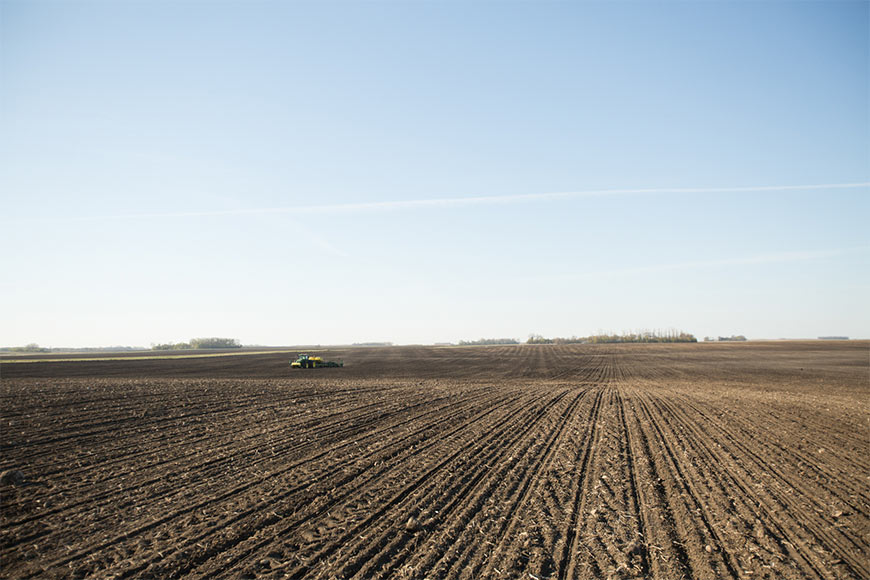Optimize Resources With Zone Management

If you haven’t already incorporated variable-rate technology into your operation, now may be the time to zero-in on your most- and least-productive areas to achieve better results. Precisely managing your fields helps your operation be more sustainable economically and environmentally by optimizing input expenditures and the resources applied to each field.
Learn From Your Data
To get started, review your farm’s historical information such as calibrated yield data from the combine or in-season satellite imagery, looking at yield patterns, and plant health and biomass trends. This year-over-year data will help you identify different management zones based on productivity and yield potential.
The next step is calculating each field’s average yield rate to use as your prescription basis. For example, in corn, if certain areas are consistently high performers, you may want to optimize production by bumping up the population by 1,000 or more seeds per acre. On the flip side, if historically low-performing areas are identified, you can save on seed costs by lowering the seeding rate in those locations.
Look for these same trends with nitrogen. If the plant population has been increased in higher-producing areas or high-yielding race-horse hybrids are selected for these zones, nitrogen rates need to rise accordingly to capitalize on yield potential. By cutting back on nitrogen levels in underperforming zones, more nitrogen becomes available for areas with the highest yield potential.
Add Variable Rates in Soybeans
Soybean farmers are also discovering that zone field management can pay big benefits in this crop, too. Soybean prescriptions are typically the inverse of what is used for corn. That means populations are typically lowered in areas of good emergence and early plant growth to promote more high-yielding areas. This increased plant vigor will help establish the stand count needed to deliver optimum yield potential.
Conversely, in areas of the field that have iron chlorosis issues or challenging soil types, we increase populations to ensure establishing an adequate stand to meet yield goals. By making these population adjustments, you eliminate highs and lows across the field for more consistent yields. Using a high-quality seed treatment is strongly recommended to help the soybean crop reach yield goals in variable-rate soybean programs.
Follow-Through Is Essential
After variable-rate prescriptions are established, making sure the planter is properly calibrated is crucial. In- season follow-up should also include taking a stand count to verify planter performance and check on emergence. If the intended plant count is 36,000 but only 32,000 seedlings emerge, other issues such as pest control and nutrient levels may need to be addressed in that zone.
Continue to check corn and soybean crops for other opportunities or challenges throughout the season. The first year of using prescription management provides a base plan that can be tweaked in the following seasons, providing a stepping-stone for increased crop performance in the coming years.
For more information about implementing variable-rate practices into your operation, contact your local WinField® United retailer.
Learn From Your Data
To get started, review your farm’s historical information such as calibrated yield data from the combine or in-season satellite imagery, looking at yield patterns, and plant health and biomass trends. This year-over-year data will help you identify different management zones based on productivity and yield potential.
The next step is calculating each field’s average yield rate to use as your prescription basis. For example, in corn, if certain areas are consistently high performers, you may want to optimize production by bumping up the population by 1,000 or more seeds per acre. On the flip side, if historically low-performing areas are identified, you can save on seed costs by lowering the seeding rate in those locations.
Look for these same trends with nitrogen. If the plant population has been increased in higher-producing areas or high-yielding race-horse hybrids are selected for these zones, nitrogen rates need to rise accordingly to capitalize on yield potential. By cutting back on nitrogen levels in underperforming zones, more nitrogen becomes available for areas with the highest yield potential.
Add Variable Rates in Soybeans
Soybean farmers are also discovering that zone field management can pay big benefits in this crop, too. Soybean prescriptions are typically the inverse of what is used for corn. That means populations are typically lowered in areas of good emergence and early plant growth to promote more high-yielding areas. This increased plant vigor will help establish the stand count needed to deliver optimum yield potential.
Conversely, in areas of the field that have iron chlorosis issues or challenging soil types, we increase populations to ensure establishing an adequate stand to meet yield goals. By making these population adjustments, you eliminate highs and lows across the field for more consistent yields. Using a high-quality seed treatment is strongly recommended to help the soybean crop reach yield goals in variable-rate soybean programs.
Follow-Through Is Essential
After variable-rate prescriptions are established, making sure the planter is properly calibrated is crucial. In- season follow-up should also include taking a stand count to verify planter performance and check on emergence. If the intended plant count is 36,000 but only 32,000 seedlings emerge, other issues such as pest control and nutrient levels may need to be addressed in that zone.
Continue to check corn and soybean crops for other opportunities or challenges throughout the season. The first year of using prescription management provides a base plan that can be tweaked in the following seasons, providing a stepping-stone for increased crop performance in the coming years.
For more information about implementing variable-rate practices into your operation, contact your local WinField® United retailer.


